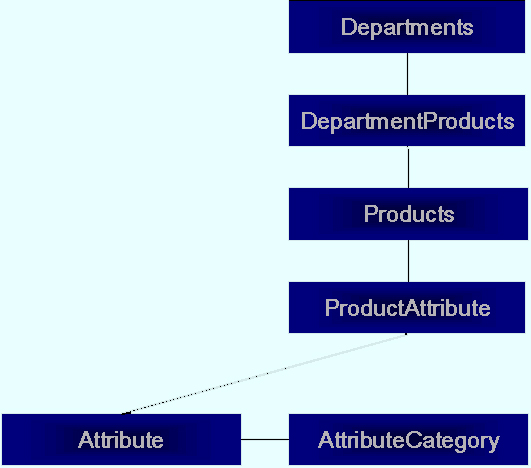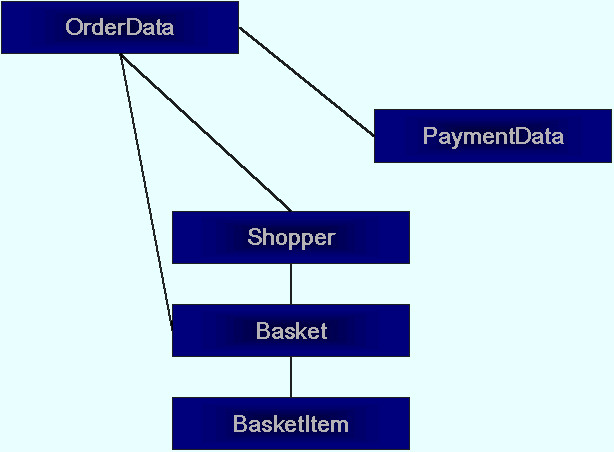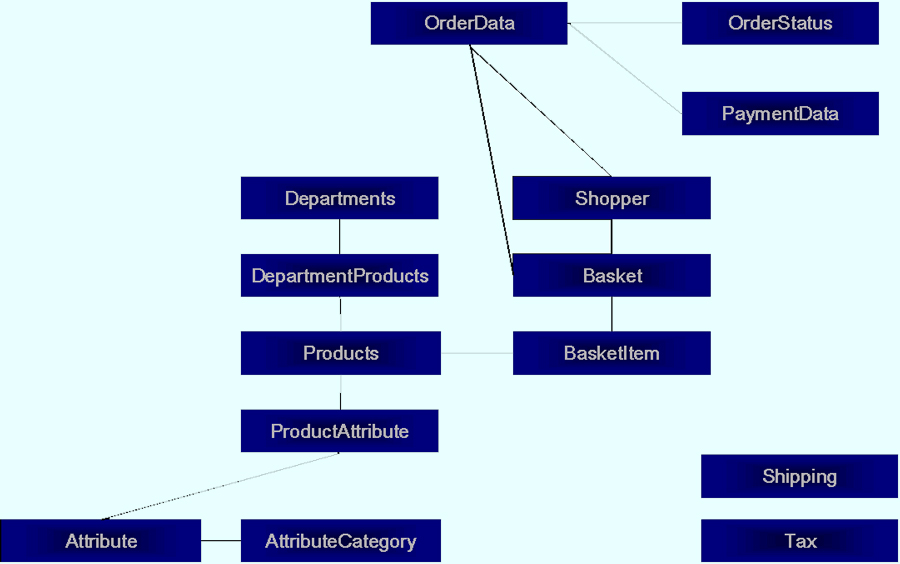
The Tables for Wild Willies CD Store
| Introduction. We
are going to create an on-line store for a fictitious company called
Wild Willies. The store sells CDs and t-shirts. Wild
Willies requires a pretty sophisticated database with a lot of
inter-related tables. This page is to give a general discussion to
review what is contained in the book.
Departments and Products. This section relates to the tables that underlie the departmental configuration, the products within each department and the product attributes. |
| Table Name | Description | Links To |
| Departments | This table contains
fields
|
This table links to the Products contained in each department through the DepartmentProducts table. |
| Products | This table contains fields
|
This table links to the Attribute
table through the ProductAttribute table.
Finally, we also need to assign categories to the Attributes through an AttributeCategory table. |
| DepartmentProducts | This is the table that ties
the particular product's to the list in the department
table. The table contains fields
|
Purely a linking table between Department and Product tables. |
| ProductAttribute | This is the table that ties
the particular product's attributes to the list in the attribute
table. The table contains fields
|
Purely a linking table between Product and Attribute tables. |
| Attribute | This table contains all the
attributes of all the products in the store. The fields are
|
This Attribute table is used largely for referential integrity for each products attributes. |
| AttributeCategory | Gives a categorization of the
attributes such as size or color.
|
Links back to the Attribute table in order to categorize them, if reasonable. |
| The following diagram represents the linkages between the tables within this overall portion of the database. These tables will definitely link in with other tables in the database, but this is sort of a section of related tables in our overall shopper interface. |

| The Shopping Basket. This section relates to the shoppers experience with actually adding things to their shopping basket and their check out. |
| Table Name | Description | Links To |
| Shopper | This table contains all of the
basic background on the shopper. The fields are
|
This table links to the Basket table to identify what they're buying |
| Basket | This table contains fields
|
This table links to the Shopper table and to each item for this shopperin the BasketItems table. |
| BasketItems | This is the table identifies
each item within a basket
|
Each BasketItem links back into the Basket in which it is contained. |
| OrderData | This table contains all the
shipping information and billing information and they are distinguished
from each other. The fields are profuse and essentially duplicate
the Shopper table fields twice, once for the ship information, another
for the billing information. It also contains
|
This OrderData table is links to the Shopper table and the Basket table.. |
| PaymentData | Gives the final payment
information for the order.
|
Links to the OrderData table |
| The following diagram represents the linkages between the tables within this overall portion of the database. These tables will definitely link in with other tables in the database, but this is sort of a section of related tables in our overall shopper interface. |

| Miscellaneous Tables. This section relates to the some of the support information that is required to complete the shopping experience. |
| Table Name | Description | Links To |
| OrderStatus | The fields are
|
This table links to the OrderData table. |
| Shipping | This table contains fields
|
Not directly linked, but it is used in shipping calculation. |
| Tax | This is the table identifies
each item within a basket
|
Not directly linked, but it is used in tax calculation. |
| The following diagram represents all of the linkages between the tables. |
